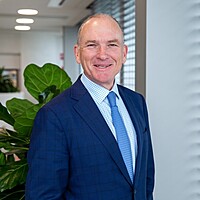Reasons for cautious optimism
High energy costs coupled with better conditions for commodities will help cushion any negative impact on the Australian economy. Immigration and population growth are likely to accelerate, underpinning Australia’s long-term structural growth and providing an additional cushion against recession.
Against the backdrop of inflation, geopolitical tensions and slowing growth, what is the investment outlook for the Australian economy in 2023?
We believe 2023 is shaping up as another fascinating year in equity markets, with inflation and interest rates continuing to dominate the narrative. In the US, the Federal Reserve’s aggressive interest rate rises are strengthening the US dollar, which is having ripple effects worldwide. China’s Zero Covid Policy is constraining growth. Meanwhile, the conflict in Ukraine continues to have wider global implications.
With interest rates expected to keep rising, the likelihood that the US and Europe will enter a recession in early 2023 is increasing. Still, it is less certain whether Australia will follow suit, given high energy costs and favourable conditions for commodities, although future rate rises could do some damage. Immigration and population growth are likely to accelerate in 2023. These are key to underpinning Australia’s long-term structural growth and provide an additional cushion against recession.
What do you think could surprise the market in 2023, either positively or negatively?
Despite the challenging environment, there are reasons for some optimism. China may start to open and official interest rates may not reach predicted levels (even if they do, they are still low by historical standards). However, we are learning to live with Covid. Although inflation is higher than usual, that can work in favour of equity markets if it remains reasonable.
What themes, sectors or regions would offer opportunities and potential risks?
The businesses that tend to do well during inflationary periods are those linked to commodities (both soft and hard), as well as essential businesses that have pricing power. The opposite is true for companies with no pricing power or offering fixed-price contracts. Businesses such as contractors and building companies with fixed-price contracts and rising input costs see their margins significantly squeezed through inflationary periods.
While sectors such as essentials (supermarkets, healthcare), materials, insurance and financials are likely to perform well in 2023, a more challenging environment should provide investors with an opportunity to invest in inexpensive, high-quality businesses with long-term structural growth.
Within your portfolio, what has worked well in 2022, and what will you do differently in 2023?
Stock selection in materials added significant value in 2022. The conviction holding in clean energy-focused miner IGO (ASX: IGO) performed positively, supported by a renewed uptrend in lithium prices. IGO is a pure-play electric vehicle (EV) battery stock and is strategically positioned in supplying the metals required for the clean energy future.
We are taking a barbell strategy to the portfolio. At one end of the barbell is commodities (metals, mining and energy) and includes stocks such as IGO, BHP (ASX: BHP), Rio Tinto (ASX: RIO), Iluka (ASX: ILU) and Santos (ASX: STO). At the other end of the barbell are companies which sell the essentials and have pricing power (consumer staples, healthcare, insurance and financials) and include stocks such as Coles (ASX: COL), Woolworths (ASX: WOW), Ramsay Healthcare (ASX: RHC), Suncorp (ASX: SUN) and CBA (ASX: CBA).
How do you expect sustainability factors to influence returns in 2023, and how is this reflected in your portfolios?
We see sustainability analysis as an essential component of our fundamental analysis. It can add meaningful value over the long term. ESG factors are central to the strategy’s research and investment process. In line with Fidelity’s policies, ESG factors mean we avoid certain stocks.
The Fund adopts a positive engagement approach whereby we discuss ESG issues with the management teams of companies in which we invest or are considering an investment. For example, we have continuous engagements with Santos Limited. Santos sees an opportunity to be a first mover in terms of the energy transition and is moving its business into a net zero emissions energy and fuels business by 2040. We supported management’s climate transition plan via the Say on Climate vote on the basis that the company has a comprehensive set of climate targets bolstered by a credible strategy to decarbonise.
Providing varied exposure
The Fidelity Australian Equities Fund gives investors access to a diversified selection of 30 to 50 companies and is designed as a long-term core holding. For further information, please visit the fund profile below or our website.

1 topic
10 stocks mentioned
1 fund mentioned

